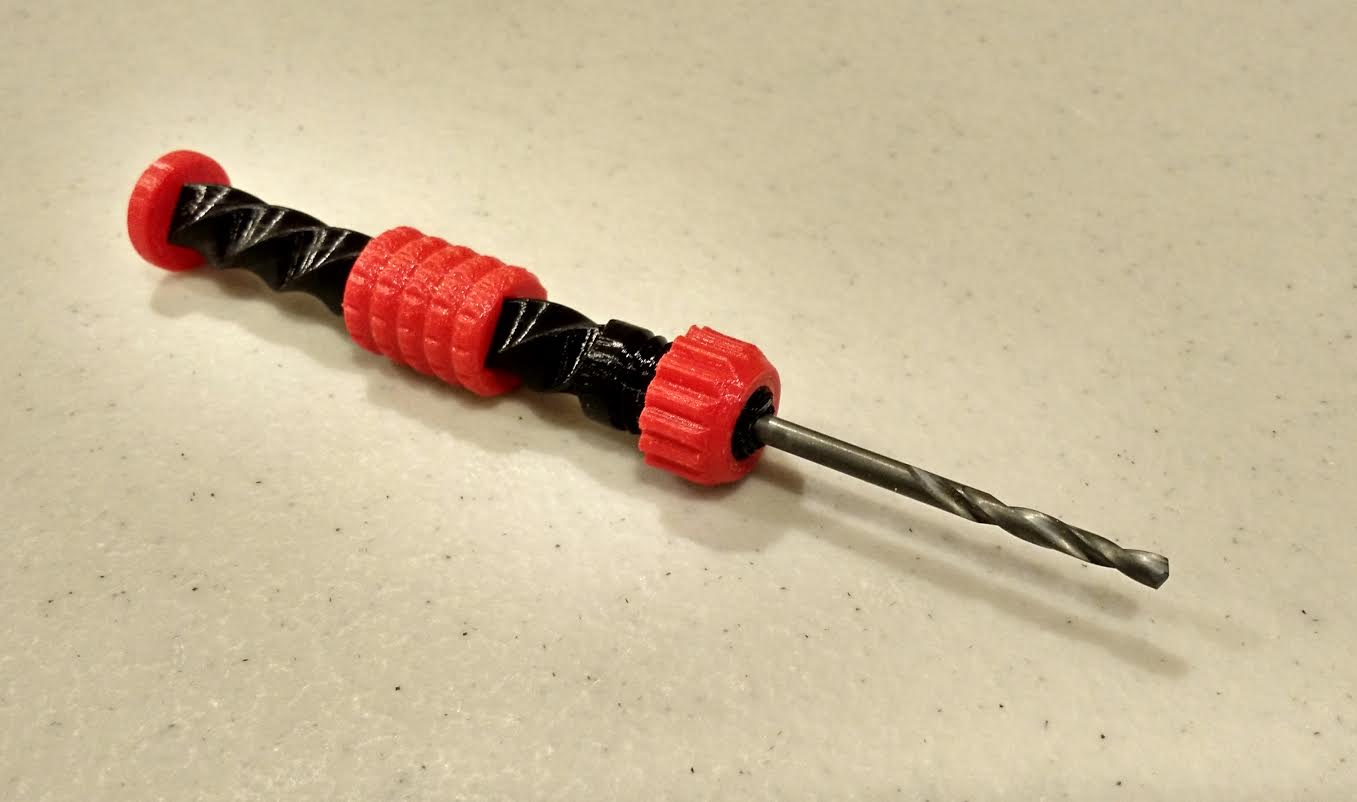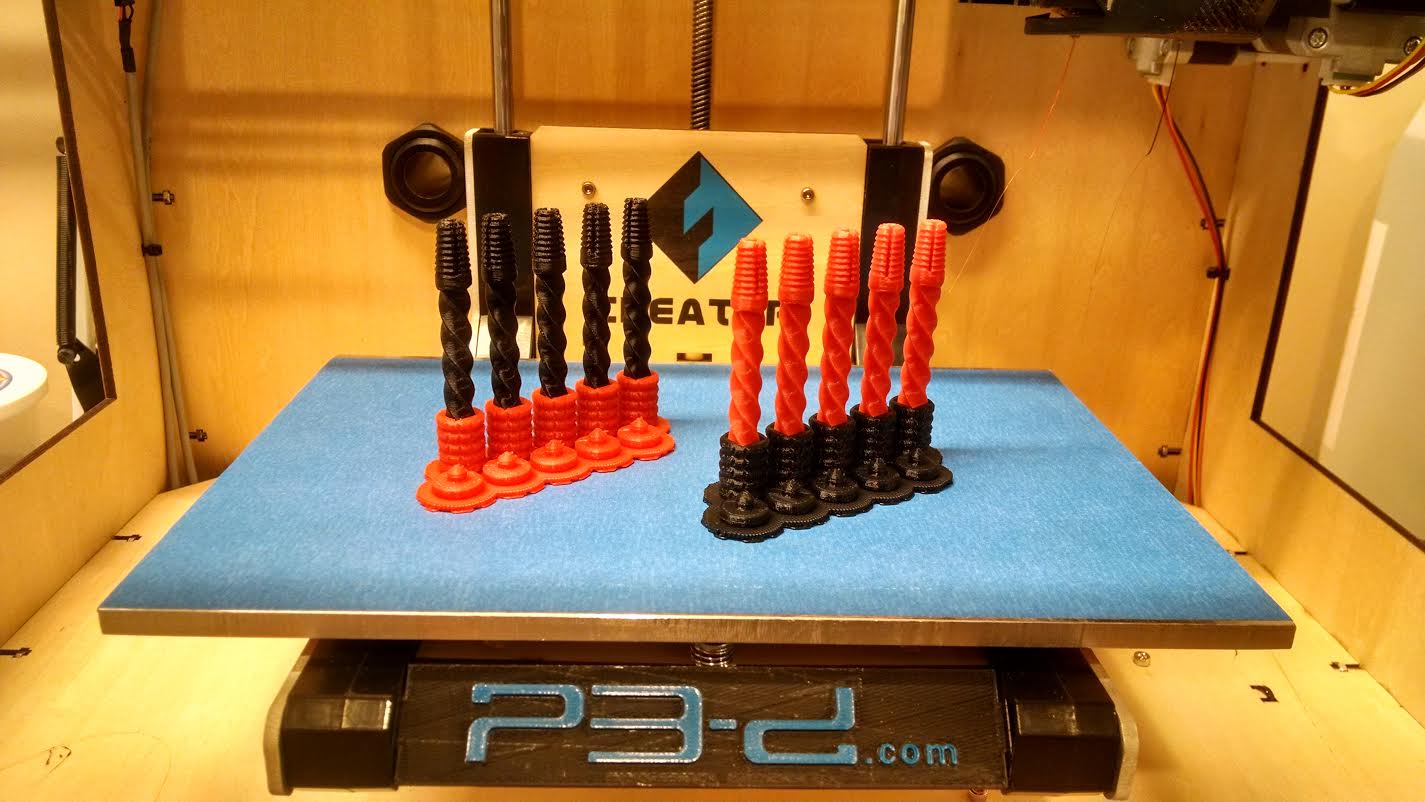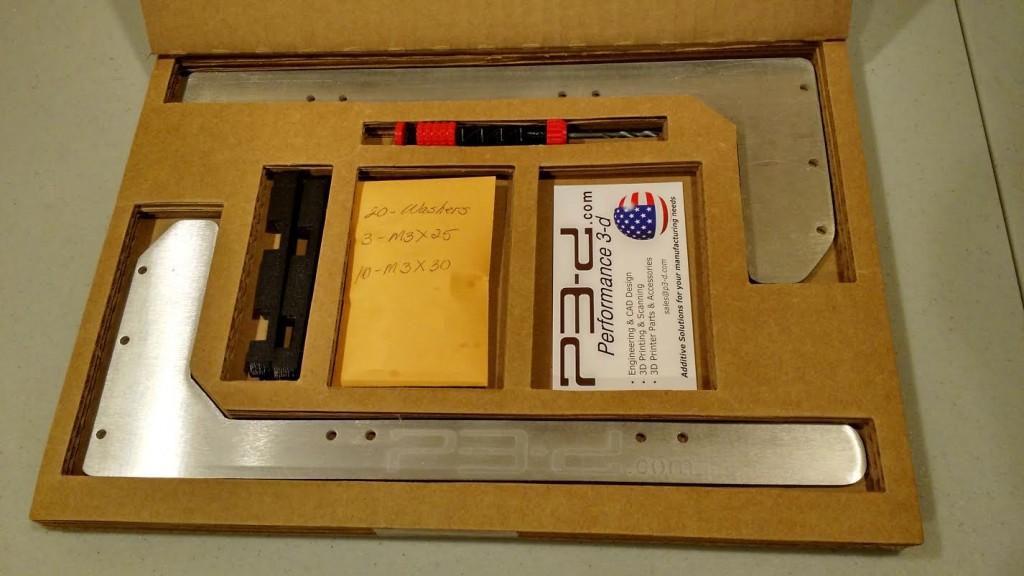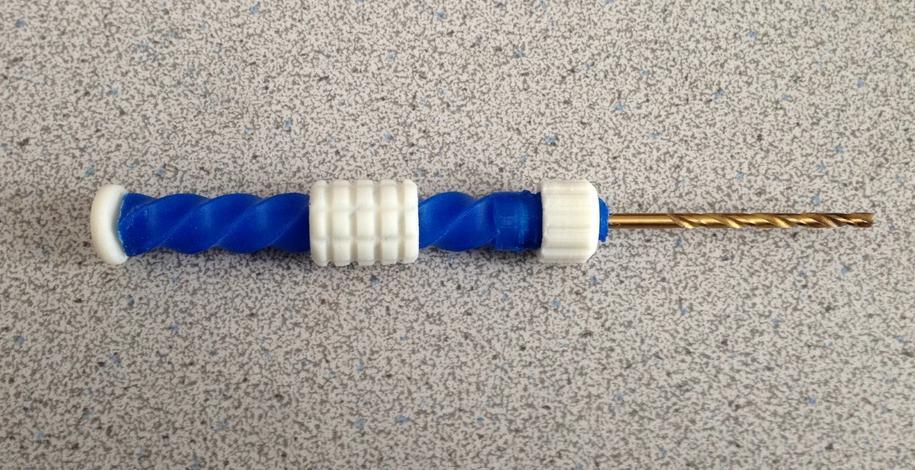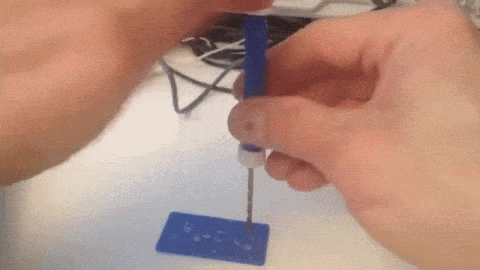 Updated: You can now download the files to 3D print this tool at 3DSha.re.
Updated: You can now download the files to 3D print this tool at 3DSha.re.
It was just last week that we broke a story on the world’s smallest drill, which was 3D printed by a man in New Zealand, named Lance Abernethy. It measured just 7.5mm wide, had the ability to drill through soft objects, and was battery operated. Now, another company has 3D printed yet another drill.
This drill is not the world’s smallest, nor does it operate with a motor. In fact, it doesn’t use electricity or battery power whatsoever, but instead relies on the laws of physics in order to drill holes in both soft and hard objects.
The design, created by an engineering and design firm named Performance 3-d, was created with full intention of being used. The company sells upgrade parts for various 3D printers, including aluminum arm stiffeners for eliminating the sagging of build plates during printing.
“We designed the drill EXACTLY to be made on 3d printers,” Jay Evanovich, CEO and Co-Founder of Performance 3-d, tells 3DPrint.com. ” We designed it from scratch, but based on Google images of similar drills, and we 3D print and ship this drill with each one of our aluminum arm kits. It is basically an installation tool, but a practical idea of how 3d printing can solve an otherwise difficult problem. Most customers would not have any equivalent means to drill these holes.”
Performance 3-d’s drills are considered “Hand Pump Drills” because they use nothing but a hand pumping motion in order to drill holes into objects. This eliminates the need for electricity or any battery power, and they are actually more powerful than you might expect.
“The drills aren’t the most powerful thing obviously, but they do work, and very well,” Evanovich tells us. “For the installation, they are drilling through injection molded plastic material. It also works just fine on wood, and I could even drill through aluminum sheet metal if I had to, but I wouldn’t want to do anything too thick or steel. Not because you couldn’t, just because it would take a while.”
They are 3D printed on traditional FFF-based desktop 3D printers in four separate pieces — the helix, the nut, the knurled hand grip, and the finger rest. It takes approximately one hour to print out each drill, but Evanovich says that they print two of the helix parts at a time and at least eight of the other pieces on a single print bed. Once printed, the pieces are assembled by hand, a process which takes just a few minutes.
As for using these drills, they are really quite self explanatory. You simply bring the nut back, insert a drill bit, and then tighten that same nut around it. Once the drill is tight, you place it over the area in which you wish to drill, push downward with one finger on the back end, and then move the hand grip up and down with the other hand.
“The finger rest is a very important part, our first version drill did not have this and when the helix spun it wanted to spin right out of your hand,” Evanovich explains. “Now the finger rest stays stationary against your finger, and when you move the hand grip up and down it turns the helix, and the drill bit. When you slide the grip toward the back of the drill, the bit is spinning in reverse (clearing any chips that have accumulated). On the down-stroke the bit is spinning forward, and cuts more of the material out of the way.”
Evanovich tells us that they plan to release the CAD files so that others can print these at home, but they may actually not need to. A man by the name of Seng-Poh Lee has actually reverse engineered the drills, and created his very own in 3D printed form. Lee has also made the files available for the drill, which functions identically to the one made by Performance 3-d, available for free download on Thingiverse. As you can see in the video below, the drill works quite well.
What do you think about this unique creation, something that can easily be 3D printed and used as a legitimate tool? Discuss in the 3D Printed Hand Pump Drill forum thread on 3DPB.com. Check out the video of the drill in action below.
Subscribe to Our Email Newsletter
Stay up-to-date on all the latest news from the 3D printing industry and receive information and offers from third party vendors.
You May Also Like
NSF Awards Kentucky $1M for Advanced Manufacturing
The National Science Foundation has awarded a $1 million grant to the University of Louisville for the Advancing Manufacturing and Building Construction Technologies (NSF AMT) project. This initiative is part...
3D Printing News Briefs, May 11, 2024: 3D Printed Stent, Tower, Sculptures, & More
We’re starting off with medical research in today’s 3D Printing News Briefs, as researchers in Korea used CT images and 3D printing to fabricate an educational simulator for a mastoidectomy....
3D Printing Unpeeled: Wind Turbines, Probiotics and Lenses
TPI Composites, ORNL and Ingersoll Rand are working to make wind turbine tooling segments that can be 18.3 meters long. These elements also include resistive wires that help keep the...
Tethon 3D Releases Cost-effective Bioprinter
Tethon 3D, known for its ceramic-loaded DLP materials, custom resins, and DLP 3D printers, has recently released a bioprinter. Vat polymerization printers like DLP systems have been widely used by...


